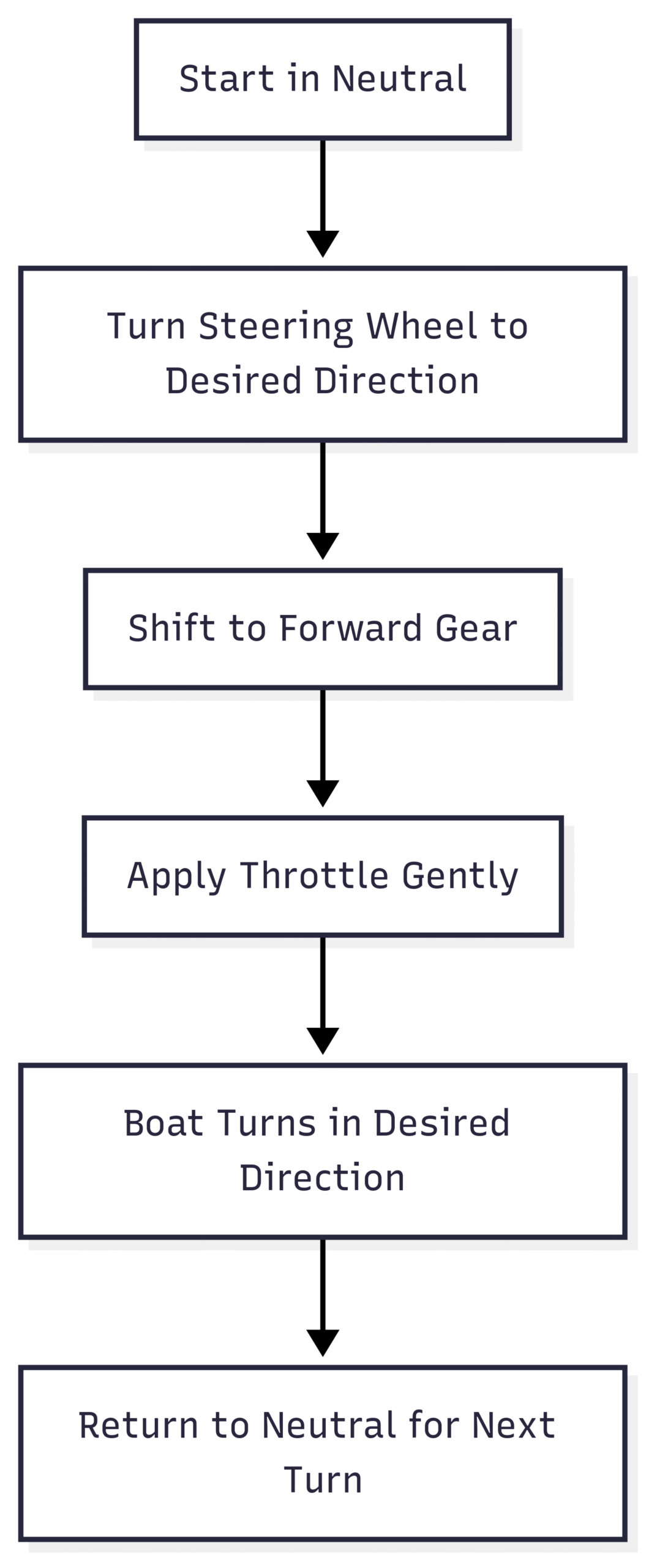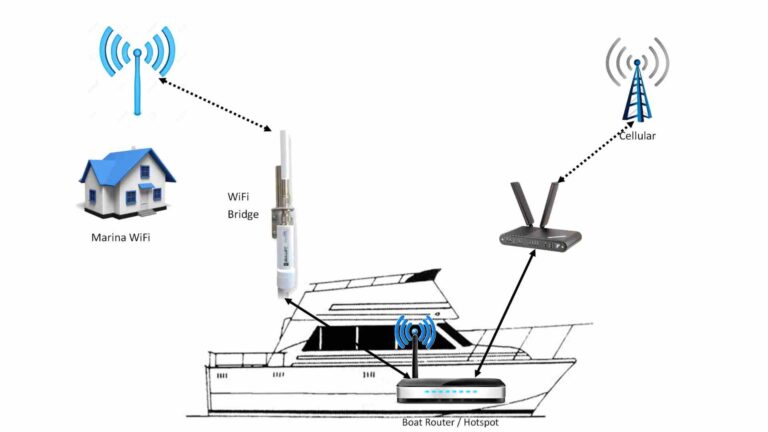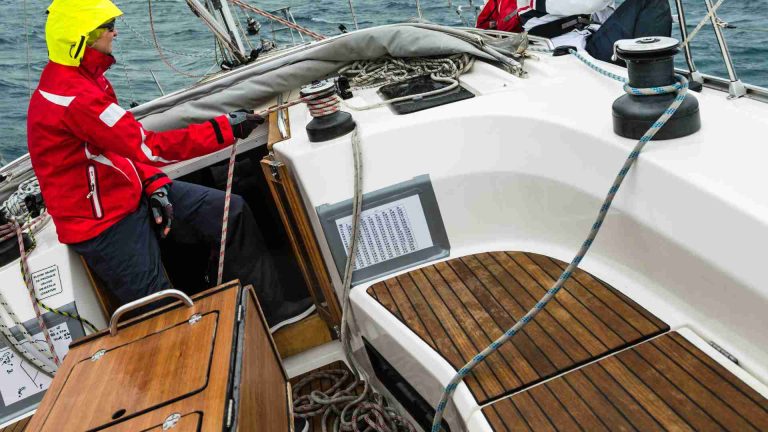How to Drive a Pontoon Boat: Step-by-Step Guide
Master driving a pontoon boat with our step-by-step guide. Learn safety, controls, docking, and more for a confident boating experience.
Pontoon boats are a popular choice for leisurely boating, offering stability, space, and ease of use, making them ideal for beginners and seasoned boaters alike. Whether you’re planning a relaxing fishing trip or a fun day on the lake with friends, learning how to drive a pontoon boat is straightforward once you understand the basics. This guide provides a detailed, step-by-step approach to operating a pontoon boat safely and confidently, covering everything from pre-departure preparations to advanced docking techniques. With insights from experienced boaters and practical tips, this article is designed to help you navigate the waters with ease.
Why Choose a Pontoon Boat?
Pontoon boats are known for their versatility and user-friendly design. Unlike traditional V-hull boats, pontoons feature two or more pontoons (or tubes) that provide excellent buoyancy and stability. This makes them ideal for calm waters like lakes, rivers, and sheltered bays. They’re perfect for fishing, socializing, or simply cruising, and their spacious decks accommodate larger groups comfortably.
Key Features of Pontoon Boats
- Stability: The wide, flat design minimizes rocking, making them safe for families.
- Ease of Operation: Simple controls and intuitive handling suit beginners.
- Versatility: Suitable for fishing, cruising, watersports, or parties.
- Capacity: Typically accommodates 8–15 people, depending on size (e.g., 20–25 feet).
For example, a 20-foot pontoon boat, like the one you might rent for a fishing trip, is manageable for first-time operators and ideal for low-speed cruising (under 10 mph). This guide will use such a boat as a reference while providing universal tips applicable to most pontoon models.
Pre-Departure Preparation: Setting the Stage for a Safe Trip
Before you even step onto the boat, thorough preparation is essential. Familiarizing yourself with the body of water, the boat itself, and safety requirements ensures a smooth and secure outing.
1. Know the Body of Water
Understanding the lake or river you’ll be navigating is critical. Research the following:
- Shallow Areas: Avoid grounding the boat by noting shallow spots or sandbars.
- Currents and Tides: Strong currents can affect steering, especially at low speeds.
- Underwater Hazards: Rocks, stumps, or debris can damage the propeller.
- Local Regulations: Check speed limits, no-wake zones, and boating laws.
Tip: Take a boater safety course, available online or in-person, to learn local laws and earn a boating license. Many states require this for operators. The U.S. Coast Guard’s mobile app is an excellent resource for checking regulations and required safety equipment.
2. Know Your Pontoon Boat
Familiarize yourself with the boat’s controls and features before setting out. If you’re renting or have just purchased a pontoon, ask the dealer or rental agency for a walkthrough. Key components to understand include:
- Dashboard and Controls: Identify the throttle, steering wheel, trim controls, and gauges (fuel, battery voltage, engine temperature).
- Motor: Most pontoons use outboard engines, which are simple to start and operate.
- Electronics: Learn how to use the GPS, depth finder, or radio if equipped.
- Safety Features: Locate the emergency stop lanyard, kill switch, and safety equipment.
Example: For a 20-foot pontoon with a 90-hp outboard motor, the dashboard typically includes a throttle lever, steering wheel, trim buttons, and basic gauges. A test run with the dealer will help you understand how these work together.
3. Safety First
Safety is non-negotiable. Ensure the following equipment is on board:
- Life Jackets: One for each passenger, properly sized (e.g., adult, child).
- Fire Extinguisher: Required for boats with fuel-powered engines.
- Throwable Flotation Device: Such as a life ring or cushion.
- Sound-Producing Device: A whistle or horn for signaling.
- Navigation Lights: If operating at dusk or dawn.
- First Aid Kit: For minor injuries.
Table: Required Safety Equipment for Pontoon Boats
| Equipment | Purpose | Requirement |
|---|---|---|
| Life Jackets | Prevent drowning | One per person, accessible |
| Fire Extinguisher | Fire suppression | Type B-1 for small boats |
| Throwable Device | Emergency flotation | One required for boats over 16 ft |
| Sound-Producing Device | Signal for help or warning | Whistle or horn |
| Navigation Lights | Visibility in low-light conditions | Required for night operation |
Tip: Download the U.S. Coast Guard app for a checklist of required equipment based on your boat’s size and location.
4. Secure Gear
Before departure, ensure all gear (coolers, fishing equipment, bags) is secured to prevent items from shifting or falling overboard. Check that passengers are seated and aware of safety protocols.
Starting the Pontoon Boat
Once preparations are complete, it’s time to start the boat and get underway. Follow these steps to ensure a smooth launch.
1. Turn On the Battery and Attach the Lanyard
- Locate the battery switch and set it to “ON.”
- Sit in the captain’s seat and attach the emergency stop lanyard (a bright red cord) to your wrist or clothing. This connects to the kill switch, which stops the engine if you leave the helm.
- Ensure the kill switch is set to “RUN.”
Safety Note: The lanyard is critical. A runaway boat can be dangerous, as one boater noted after witnessing an incident. Always wear it when operating the boat.
2. Trim the Motor
If the motor is trimmed up (out of the water) for storage, lower it until the propeller is submerged. Use the trim buttons on the throttle or dashboard. Proper trim ensures efficient propulsion and prevents cavitation (air bubbles reducing propeller efficiency).
3. Start the Engine
- Confirm the throttle is in neutral (the engine won’t start if it’s in gear).
- Double-check the kill switch is in the “RUN” position.
- Turn the key to start the motor. If it doesn’t start, verify the throttle and kill switch settings.
Troubleshooting Tips:
- Engine Won’t Start: Ensure the throttle is in neutral and the kill switch is fully engaged.
- Sputtering Engine: Check fuel levels and ensure the propeller is clear of debris.
4. Check Gauges
Before leaving the dock, verify:
- Battery Voltage: Typically 12–14 volts.
- Engine Temperature: Should stabilize within normal range.
- Fuel Level: Ensure enough for your trip, plus a reserve.
Cruising: Operating the Pontoon Boat
With the engine running and gauges checked, you’re ready to cruise. Pontoon boats are intuitive to drive, but mastering the throttle and trim takes practice.
1. Leaving the Dock
- Untie the dock lines (ropes securing the boat). If alone, detach the lanyard before leaving the helm to untie lines.
- Shift the throttle into forward gear slowly to pull away from the dock.
- Observe speed restrictions and no-wake zones near the dock.
Tip: Have a co-captain or passenger assist with dock lines to avoid leaving the helm. Go slow—only as fast as you’re willing to hit something, as one boater advised.
2. Using the Throttle
The throttle controls speed and direction:
- Forward Gear: Pushes the boat forward. The more you push, the faster it goes.
- Neutral: The engine runs, but the propeller doesn’t engage, allowing the boat to coast.
- Reverse Gear: Acts as a brake when moving forward or propels the boat backward when stationary.
Analogy: Think of the throttle like a car’s gear shifter. Neutral is like park, forward is drive, and reverse is the brake. As one boater put it, driving a pontoon is like parking a car without brakes—use neutral to coast and reverse to stop.
Practice Exercise:
- In open water, practice shifting between forward, neutral, and reverse.
- Test reverse to feel the stopping power. A quick shift to reverse can halt forward momentum faster than coasting in neutral.
3. Steering and Turning
Pontoon boats steer via the outboard motor, which directs water flow to turn the boat. For precise turns, especially at low speeds:
- Shift to neutral.
- Turn the wheel in the desired direction.
- Shift back to forward to apply power.
This “steer then gear” technique, as one boater called it, makes turning easier, especially when docking. For example, a 20-foot pontoon can turn tightly using this method, ideal for navigating crowded lakes.
Chart: Pontoon Boat Steering Process

4. Trimming the Engine
The trim function adjusts the angle of the outboard motor, affecting performance and handling:
- Trim Down: Lowers the propeller, ideal for starting or cruising in deep water.
- Trim Up: Raises the propeller, used in shallow water to avoid hitting the bottom or to optimize speed.
How to Practice Trimming:
- In deep water, adjust the trim while cruising and note changes in engine sound and boat performance.
- In shallow water, trim up to protect the propeller. Always monitor depth finders or visual cues.
Warning: Forgetting to trim up in shallow water can damage the propeller, as one boater emphasized after learning the hard way.
5. Handling Wind and Current
Pontoon boats have a large surface area, making them susceptible to wind. In strong breezes:
- Increase throttle slightly to maintain control.
- Be aware that wind can push the boat off course, especially at low speeds or when docking.
Example: On a windy lake, a 20-foot pontoon may drift sideways. Use short bursts of power in forward or reverse to counteract wind and maintain your heading.
Docking: The Trickiest Part
Docking is often the most challenging aspect for new pontoon boat drivers. The key is to go slow, use neutral, and make small corrections.
1. Approaching the Dock
- Speed: Approach at the slowest speed possible—only as fast as you’re willing to hit the dock.
- Neutral is Your Friend: Shift to neutral to coast, using short bursts of forward or reverse to adjust position.
- Wind and Current: Account for these forces, as they can push the boat off course.
Tip: Assign passengers to handle dock lines. They can grab posts or cleats to pull the boat into position, reducing the need for perfect maneuvering.
2. Using Reverse as a Brake
When approaching the dock:
- Shift to reverse briefly to slow forward momentum.
- Be cautious: If the motor is turned right in forward gear, reverse will turn the boat left, as one boater noted. Align the motor straight before reversing near the dock.
3. Practice Makes Perfect
- Practice docking in open water by aiming for a buoy or imaginary point.
- Spin the boat in circles to get a feel for its turning radius, as suggested by a boater with an 18-foot pontoon.
Chart: Docking Process

Additional Tips from Experienced Boaters
The boating community offers valuable insights for first-time pontoon drivers:
- Go Slow Near Docks: “Never approach something harder than you’re willing to hit it,” as one boater advised.
- Use Neutral Liberally: Neutral allows the boat to coast, giving you time to adjust without constant power.
- Steer Before Power: Turn the wheel in neutral before applying throttle for easier turns.
- Watch the Wind: Pontoons act like sails in high winds, so plan maneuvers accordingly.
- Wear the Lanyard: The emergency stop lanyard prevents accidents if you’re thrown from the helm.
Pontoon Boat Specifications and Costs
For context, here’s a breakdown of a typical 20-foot pontoon boat, like the one you might rent for a fishing trip:
Table: Sample Pontoon Boat Specifications (20-Foot Model)
| Feature | Specification |
|---|---|
| Length | 20 feet |
| Engine | 90-hp outboard (e.g., Mercury or Yamaha) |
| Capacity | 8–10 people |
| Top Speed | 20–25 mph (ideal for cruising at 10 mph) |
| Fuel Capacity | 20–30 gallons |
| Weight | ~2,000 lbs (dry weight) |
| Features | Bimini top, seating, fishing rod holders |
Cost:
- Rental: $200–$500 per day, depending on location and season.
- Purchase: $20,000–$40,000 for a new 20-foot model with a 90-hp engine.
Tip: For a fishing trip, confirm the boat has rod holders and a livewell if needed. Rentals often include safety equipment, but double-check.
Troubleshooting Common Issues
- Boat Won’t Start: Check throttle (neutral), kill switch (RUN), and fuel.
- Poor Maneuverability: Adjust trim or increase throttle slightly in windy conditions.
- Propeller Damage: Trim up in shallow water and inspect regularly.
- Drifting While Docking: Use reverse to counteract wind or current.
Final Thoughts: You’re the Captain Now
Driving a pontoon boat is one of the easiest ways to enjoy the water. With its intuitive controls and stable design, a pontoon is forgiving for beginners. The key is preparation: know the water, understand your boat, prioritize safety, and practice docking. As one boater shared after their first trip, “It was easy and a lot of fun!” With the tips in this guide, you’ll be cruising confidently in no time.
Pro Tip: If you’re still nervous, book a session with a boating instructor or ask your dealer for a hands-on tutorial. Practice in open water to build confidence before navigating busy lakes or tight docks.
Share How to Drive a Pontoon Boat: Step-by-Step Guide with your friends and Leave a comment below with your thoughts.
Read Navigating Lake Cumberland for Boaters and Enthusiasts until we meet in the next article.






